First, the supply and demand of lithium carbonate is tight, lithium in salt lake brine is the future development direction
The content of lithium in the earth's crust is about 0.0065%, and the lithium-containing minerals are more than 150 minutes, mainly in the form of spodumene, lithium mica, lithium feldspar, aluminophosphate or the like. These ores can also be divided into two types: brine type and hard rock type, of which 66% are present in brine and 35% are present in ore. At present, the lithium resources used in the global exploitation mainly include pegmatite deposits and brine deposits.
According to 2016 statistics, the world's identified lithium resources are about 40.99 million tons. From the distribution point of view, it is mainly distributed in South America and Asia, accounting for 70% of the total. China's reserves are about 5.7 million tons. 14%, of which 85% are salt lake resources and 15% are ore resources. It can be seen that the lithium resources of salt lakes in China are much higher than the lithium resources of ore. The exploitation of lithium resources in salt lakes is bound to become the mainstream direction in the future.
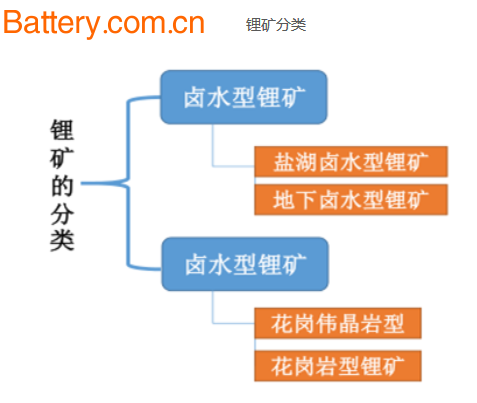
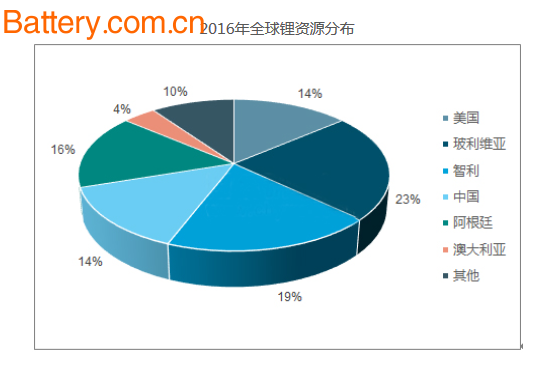
Although China has abundant resource reserves, domestic lithium processing materials are highly dependent on foreign countries. Among them, imported spodumene processing accounts for 66%, and imported high-concentration brine processing accounts for 18%. Although there are brines in Tibet and Qinghai in China, domestic lithium processing enterprises need to transport brine from the southern hemisphere to produce lithium carbonate. The main reasons are as follows:
1. Technical difficulty is the root cause. Although China's salt lakes are rich in reserves, most of them are scattered, and the magnesium content is relatively high, making processing difficult. The magnesium content of salt lakes abroad is relatively low, so the technical difficulty of extracting lithium from salt lakes in China is much greater than that of foreign countries. This is also the fundamental reason why domestic enterprises have to import raw materials from abroad.
2. Insufficient talents, China's salt lakes are mostly in the western region, and the natural environment is relatively weak, which is not conducive to the introduction of talents.
3. The logistics cost is high. Although there are transportation networks such as Lanxin High-speed Railway, Qinghai-Tibet Railway and Beijing-Tibet Expressway, the logistics cost is still relatively high compared to the eastern coastal areas.
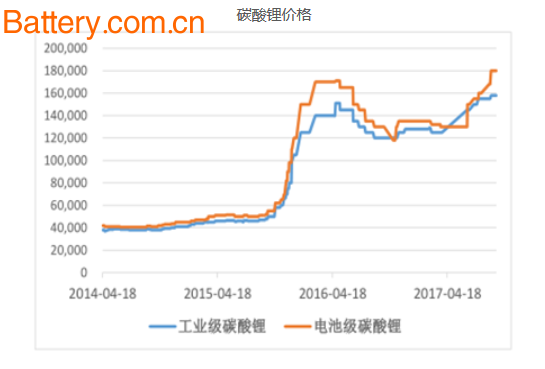
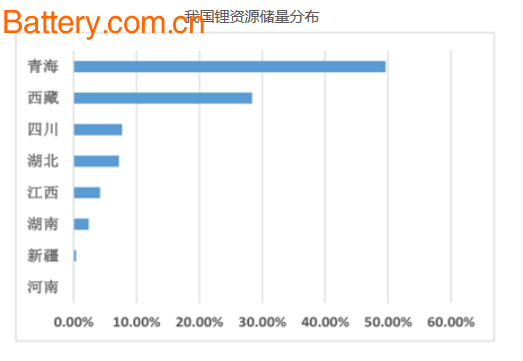
However, with the sharp rise in the price of lithium carbonate in the past year, many listed companies have accelerated the investment in lithium extraction in the salt lake, so the shortage of talents and logistics costs have been well resolved. At present, the main reason that is plaguing the mass production of lithium in salt lakes in China is technology. With the breakthrough in technology, mass production in the future is just around the corner.
Lithium carbonate is mainly used in ceramics, glass, lithium batteries and other industries, and is divided into battery grade and industrial grade lithium carbonate. Demand for industrial grade lithium carbonate is relatively stable, growing to single digits per year. The battery-grade lithium carbonate accounted for about 40%. With the rapid growth of new energy vehicles in recent years, the demand for battery-grade lithium carbonate can grow by more than 50% annually, driving the overall price and demand of lithium carbonate. rise. As the demand for battery-grade lithium carbonate continues to increase, there is still a gap between the supply and demand of domestic lithium carbonate. With the gradual improvement of lithium extraction technology in salt lakes, lithium in salt lakes will continue to expand, most of which will increase capacity in 2019. It will be completed by 2020, so it is expected that the supply and demand of domestic lithium carbonate will be balanced by 2020.
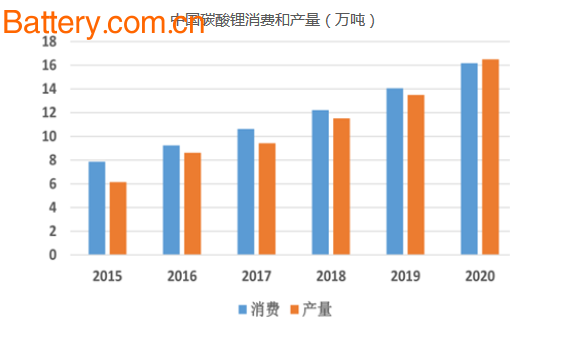
Second, from the perspective of resource reserves and mining conditions, Chaerhan Salt Lake is most suitable for large-scale mining.
China's salt lakes are mainly distributed in Qinghai and Tibet. At present, China has more than 1,500 salt lakes, mainly distributed in Qinghai and Tibet. Among them, the resources of lithium carbonate have been developed, such as Chaerhan Salt Lake, Yiliping Salt Lake, Dongtai Jinnaer Salt Lake, Xitai Genai Salt Lake, Dachaidan Salt Lake, Tibet’s Zabuye Salt Lake, and Tibet’s Ali Area. Salt Lake and Longmu Salt Lake. The reserves of various salt lakes are different, including the Chaerhan Salt Lake, with a reserve of about 7.18 million tons of lithium carbonate, followed by the Zabuye Salt Lake in Tibet, with a reserve of about 2.17 million tons of lithium carbonate.

The content of lithium in the earth's crust is about 0.0065%, and the lithium-containing minerals are more than 150 minutes, mainly in the form of spodumene, lithium mica, lithium feldspar, aluminophosphate or the like. These ores can also be divided into two types: brine type and hard rock type, of which 66% are present in brine and 35% are present in ore. At present, the lithium resources used in the global exploitation mainly include pegmatite deposits and brine deposits.
According to 2016 statistics, the world's identified lithium resources are about 40.99 million tons. From the distribution point of view, it is mainly distributed in South America and Asia, accounting for 70% of the total. China's reserves are about 5.7 million tons. 14%, of which 85% are salt lake resources and 15% are ore resources. It can be seen that the lithium resources of salt lakes in China are much higher than the lithium resources of ore. The exploitation of lithium resources in salt lakes is bound to become the mainstream direction in the future.


1. Technical difficulty is the root cause. Although China's salt lakes are rich in reserves, most of them are scattered, and the magnesium content is relatively high, making processing difficult. The magnesium content of salt lakes abroad is relatively low, so the technical difficulty of extracting lithium from salt lakes in China is much greater than that of foreign countries. This is also the fundamental reason why domestic enterprises have to import raw materials from abroad.
2. Insufficient talents, China's salt lakes are mostly in the western region, and the natural environment is relatively weak, which is not conducive to the introduction of talents.
3. The logistics cost is high. Although there are transportation networks such as Lanxin High-speed Railway, Qinghai-Tibet Railway and Beijing-Tibet Expressway, the logistics cost is still relatively high compared to the eastern coastal areas.


Lithium carbonate is mainly used in ceramics, glass, lithium batteries and other industries, and is divided into battery grade and industrial grade lithium carbonate. Demand for industrial grade lithium carbonate is relatively stable, growing to single digits per year. The battery-grade lithium carbonate accounted for about 40%. With the rapid growth of new energy vehicles in recent years, the demand for battery-grade lithium carbonate can grow by more than 50% annually, driving the overall price and demand of lithium carbonate. rise. As the demand for battery-grade lithium carbonate continues to increase, there is still a gap between the supply and demand of domestic lithium carbonate. With the gradual improvement of lithium extraction technology in salt lakes, lithium in salt lakes will continue to expand, most of which will increase capacity in 2019. It will be completed by 2020, so it is expected that the supply and demand of domestic lithium carbonate will be balanced by 2020.

China's salt lakes are mainly distributed in Qinghai and Tibet. At present, China has more than 1,500 salt lakes, mainly distributed in Qinghai and Tibet. Among them, the resources of lithium carbonate have been developed, such as Chaerhan Salt Lake, Yiliping Salt Lake, Dongtai Jinnaer Salt Lake, Xitai Genai Salt Lake, Dachaidan Salt Lake, Tibet’s Zabuye Salt Lake, and Tibet’s Ali Area. Salt Lake and Longmu Salt Lake. The reserves of various salt lakes are different, including the Chaerhan Salt Lake, with a reserve of about 7.18 million tons of lithium carbonate, followed by the Zabuye Salt Lake in Tibet, with a reserve of about 2.17 million tons of lithium carbonate.
Distribution of major salt lakes in China

These tire Changers are packed with several user based features to ease up the process of tire changing. The carefully designed parts are durable and fail-safe.
Motorcycle Tire Changer,Tire Changer Motorcycle,ATV Tire Changer,Tire Changer For Motorcycle
Yingkou Junyuan Machinery Manufacturing Co., Ltd , https://www.yuanmech.com